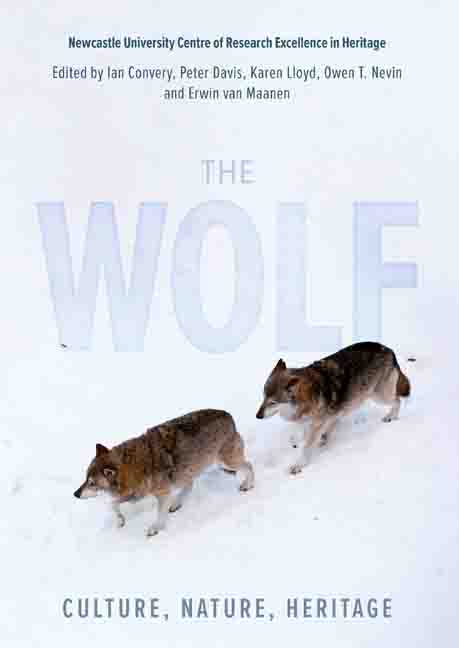Book contents
- Frontmatter
- Dedication
- Contents
- List of Illustrations
- Preface and Acknowledgments
- List of Abbreviations
- Poem: Trophic Cascade by Camille T Dungy
- Foreword
- Part I Imagining the Wolf
- Part II What Makes the Wolf
- Part III Return of the Wolf
- Part IV Personal Encounters
- Afterword: The Ecological Disadvantage of Living on an Island
- Glossary
- List of Contributors
- Index
1 - The Wolf in the Human Mind Across Space and Time
Published online by Cambridge University Press: 10 January 2024
- Frontmatter
- Dedication
- Contents
- List of Illustrations
- Preface and Acknowledgments
- List of Abbreviations
- Poem: Trophic Cascade by Camille T Dungy
- Foreword
- Part I Imagining the Wolf
- Part II What Makes the Wolf
- Part III Return of the Wolf
- Part IV Personal Encounters
- Afterword: The Ecological Disadvantage of Living on an Island
- Glossary
- List of Contributors
- Index
Summary
For Ismeralda, the beautiful young she-wolf who never became ‘wolf ‘ as a result of human misjudgment.
No other mammal is so deeply embedded and disparately considered in human thinking and cultural expressions in history as the wolf. In addition to the multifarious representations of the animal in mythology, religion, fairy tales and legend, it was regarded by the psychologist C G Jung as an archetypical being or ancient echo of the human collective subconscious (Jung 2003). In this figurative moral light, the wolf persistently and universally inspires human traits, both good and evil. According to a Cherokee tale, one can choose to feed either one's inner harmonious white wolf or the demeaning ominous black wolf, a parallel to the Christian belief of the demonic wolf amongst the innocent ‘human flock’.
The wolf became part of human culture far back in prehistory. According to recent estimates, wolves bonded repeatedly and in multiple ways with people from around 35,000 years ago, with several lines leading to (proto)dogs across Eurasia. These adopted ‘wolfdogs’ had social behavioural traits that were familiar and valued by people (Miklosi 2015; Shipman 2021; Schleidt and Shalter 2003). The wolf as a wild and untamed ‘counterpart’ remained forever detached from human civilisation, at times perceived as a fringe animal; one incessantly stirring the human imagination.
THE WOLF AS TOTEM
Palaeolithic humans, with their predominant animistic worldview, admired wolves as skilled competitors rather than dangerous rivals. Many northern shamanic cultures worshipped the wolf as a spiritually guiding ‘power animal’ (Lopez 1978; Eliade 1989; Hunt 2008). Despite this widespread veneration, representation of the wolf in cave and carving art is scant, certainly when compared to more common renderings of predators such as the cave bear, hyena, lion and leopard (Guthrie 2005; Shipman 2009). However, at least three wolf depictions can be found in the Altxerri Cave in Spain and the Font-de-Gaume and La Grotte de la Vache caves in France; in the latter there is a bone carving of two wolves interacting, indicating perhaps that early modern humans were interested in the social nature of the animal.
- Type
- Chapter
- Information
- The WolfCulture, Nature, Heritage, pp. 3 - 20Publisher: Boydell & BrewerPrint publication year: 2023



